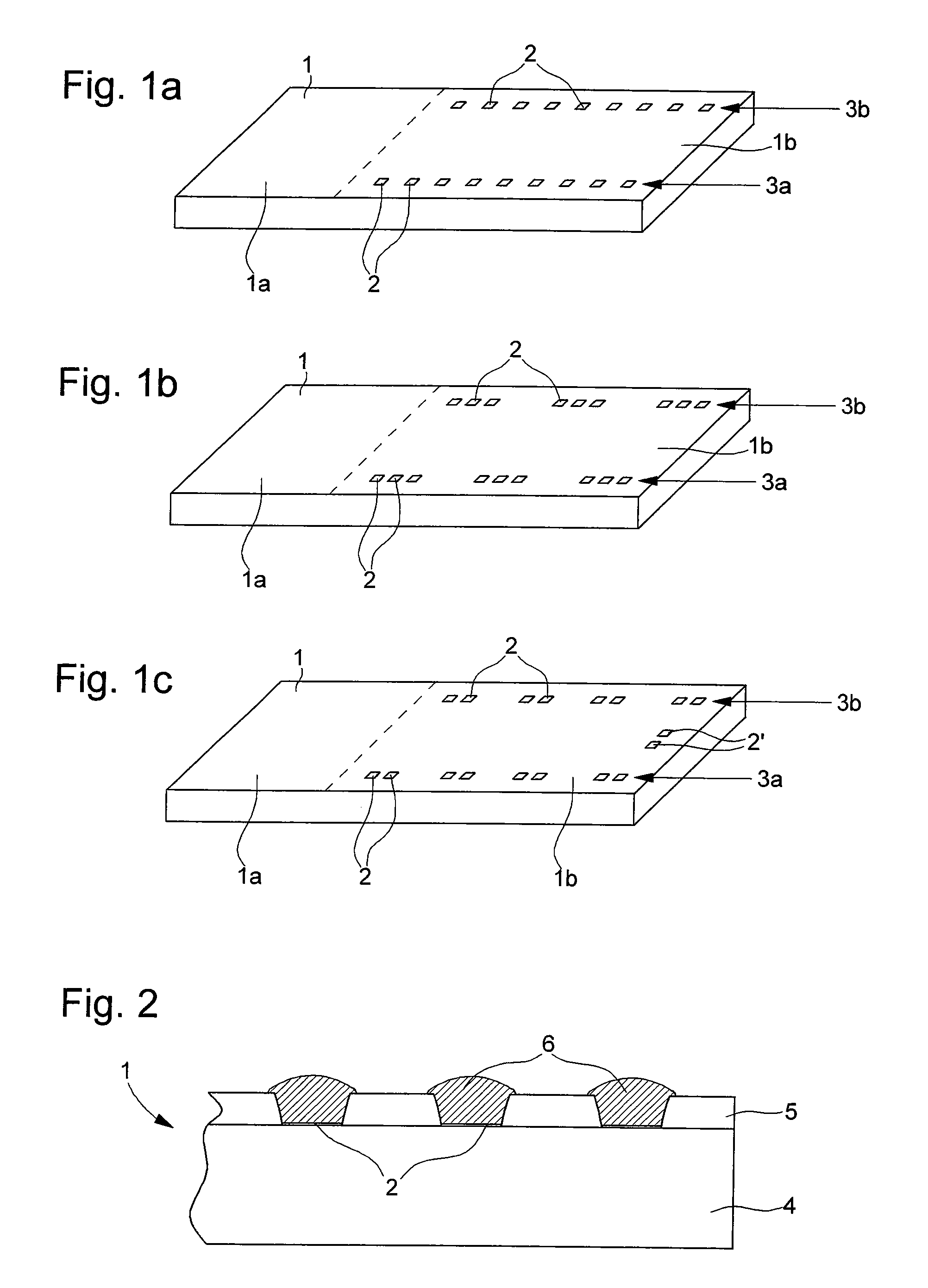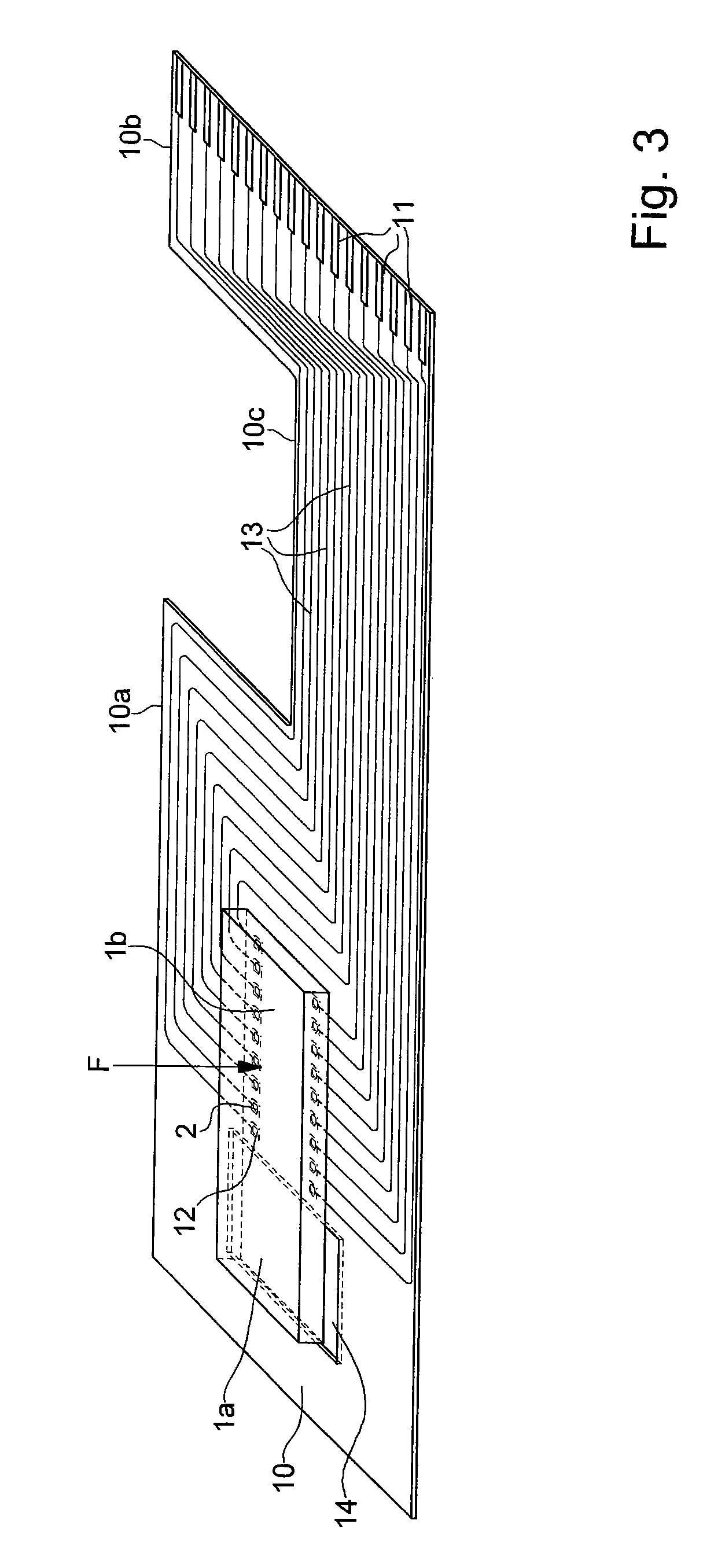Integrated photoreceptor circuit and optoelectronic component including the same with electric contact pads arranged solely on side of the processing area which is juxtaposed with the photosensitive area
a photoreceptor circuit and optoelectronic technology, applied in the direction of photometry, amplifiers controlled by light, photometry, etc., can solve the problems of wasting space and not using the photoreceptor circui
- Summary
- Abstract
- Description
- Claims
- Application Information
AI Technical Summary
Benefits of technology
Problems solved by technology
Method used
Image
Examples
first embodiment
[0033]FIG. 3 shows a three-dimensional view of an optoelectronic component. On a first face of a substrate 10, which may preferably be flexible, this optoelectronic component includes an integrated photoreceptor circuit able to pick up the light generated, for example, by a light source that is not shown. The photoreceptor circuit thus includes a photosensitive area la and a processing unit area 1b in accordance with the embodiment described with reference to FIG. 1a for example.
[0034]This photoreceptor circuit is mounted on a first portion 10a of flexible substrate 10 by a flip chip technique. In order to do this, contact pads 2 of the photoreceptor circuit, which include metal bumps as shown in FIG. 2, are electrically connected across corresponding connection pads 12 of the first portion of substrate 10. The connection pads are arranged in the same arrangement and position as the metal bumps of processing unit area 1b of the circuit in two rows.
[0035]The electrical connection bet...
second embodiment
[0040]The first portion 10a of substrate 10 includes two rows of connection pads 12 each arranged on two opposite sides of processing unit area 1 only. These connection pads 12 could be arranged in the same way as contact pads 2 of processing unit area 1b. The electric connection of contact pads 2 is achieved in this second embodiment by metal wires 15, such as aluminium wires, to the corresponding connection pads 12 of first portion 10a of substrate 10. These connection pads 12 are connected to preferably metal conductive paths 13, which are arranged on one or other face of the substrate. The conductive paths thus connect connection pads 12 to connection terminals 11 placed on the second portion 10b of the substrate.
[0041]As previously, one could envisage encapsulating only the photosensitive area, either by resin, or by an opaque insulating cover that is not shown. This leaves photosensitive area 1a free without any mechanical stress during the entire method for making the optoele...
PUM
 Login to View More
Login to View More Abstract
Description
Claims
Application Information
 Login to View More
Login to View More - R&D
- Intellectual Property
- Life Sciences
- Materials
- Tech Scout
- Unparalleled Data Quality
- Higher Quality Content
- 60% Fewer Hallucinations
Browse by: Latest US Patents, China's latest patents, Technical Efficacy Thesaurus, Application Domain, Technology Topic, Popular Technical Reports.
© 2025 PatSnap. All rights reserved.Legal|Privacy policy|Modern Slavery Act Transparency Statement|Sitemap|About US| Contact US: help@patsnap.com



